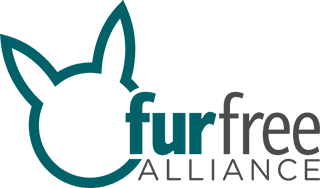
Third outbreak of SARS-CoV-2 on a fur farm in Italy
GALEATA, DECEMBER 5, 2022 — The World Organisation for Animal Health has announced Italy’s third outbreak of SARS-CoV-2 on a mink fur farm, located in the municipality of Galeata (FC). The farm has been closed since Italy’s national fur farming ban came into force on 1 January this year, with 1,523 minks remaining caged on the premises.
Italy’s permanent fur farming ban was approved in December 2021 as an amendment to the Budget Law 2022, and according to Italian production data, it prevented the exploitation of at least 60,000 mink per year. A ministerial decree that has been due to be issued since 31 January, should have seen the remaining closed fur farms cleared of mink, including rehoming as many animals as possible in suitable sanctuaries. However, the decree titled “Criteria and procedures for the payment of compensation to the owners of mink, fox, raccoon dog, chinchilla and any other kind of animal breeding farms for the purpose of obtaining fur, as well as the discipline of transfers and possession of these animals” has not yet been issued despite being created by the Minister of Agriculture and in agreement with the Ministers of Health and Ecological Transition. Animal protection groups Essere Animali, Humane Society international/Europe and LAV appeal to the Minister of Agriculture and Food Safety Francesco Lollobrigida. Fur farming and trade throughout the European Union must be banned, a claim supported by the European Citizens’ Initiative #FurFreeEurope.
Essere Animali, Humane Society International/Europe and LAV state:
“Since January, we have been waiting for the inter-ministerial decree to start emptying the last five fur farms where more than 5,000 minks are still housed and crammed into tiny cages and now risk being killed. It is clear that the inaction of the competent ministries is continuing to pose a risk to public health and continues to ignore the most basic principles of animal welfare. We ask the Minister of Agriculture, Francesco Lollobrigida, to intervene urgently to implement the provisions of the 2022 Budget Law and thus allow the transfer of at least some of the mink still locked up in the cages of intensive fur farms.”
In Italy, two outbreaks of coronavirus have already occurred in mink farms: the first in August 2020 in Capralba (Cremona) and the second in January 2021 in Villa del Conte (Padua). In November, this year, as part of the compulsory diagnostic screening aimed at intercepting the possible introduction of the SARS-CoV-2 coronavirus in mink farms as ordered by former Health Minister Roberto Speranza in December 2020, two minks were found to be positive for coronavirus infection in a third farm, in Galeata (FC). The screening consisted of 60 swabs every 15 days on each farm. On 24 November, the World Organisation for Animal Health reported that the animals were swabbed (real-time PCR) for clinical signs compatible with infection. Although one mink is reported to have died, it is not clear whether the remaining animals on the farm have been culled or whether more have since died from the infection.
The farm in question is located in the municipality of Galeata (FC) and, together with the other farms in Ravenna—fraction of San Marco (640 mink), Capergnanica (Cremona, 1,180 mink), Calvagese della Rivera (Brescia, 1,800 mink), and Castel di Sangro (L’Aquila, 18 mink) — it is one of the last facilities in Italy where thousands of breeding mink are still locked up in cages.
These animals would ordinarily have been used to start a new production cycle in 2021. However, the temporary fur farming ban ordered by the then Minister of Health as an anti-Covid measure in recognition of fur farms as potential reservoirs of the coronavirus, and the subsequent permanent ban on farming animals for fur has left the animals in a sort of limbo for more than 10 months. They could not be killed for commercial fur trade purposes nor for public health needs without a confirmed coronavirus infection, but could not be released into the wild, since they are non-native predators and potential reservoirs of the pandemic virus.
According to the provisions of the law, the Minister of Agriculture should have regulated by decree the system of compensation for mink farmers and the possible transfer of animals to facilities managed directly or with animal welfare associations. If the decree had been adopted in time on 31 January, at least some mink present on the mink farms that were being decommissioned would probably have been able to be relocated to other facilities such as sanctuaries. This would have helped reduce the population density and, consequently, the concentration of animals particularly susceptible to SARS-CoV-2 coronavirus infection.
This grave delay in managing over 5,000 minks remaining on now closed fur farms, is a significant animal welfare problem. These minks have been confined in the same cages of just a few square centimetres for at least two years, but possibly as much as three to four years because they qualify as “breeding” animals. In addition, it also puts public health at risk. The human-mink-human spillover chain has been well documented since the first cases were reported in the Netherlands in May 2020.
Essere Animali, Humane Society international/Europe and LAV conclude:
“To avoid the risk of new coronavirus outbreaks on European mink farms and to spare the lives of millions of animals exploited solely for the value of their fur, we urge those who have not yet done so to sign the European Citizens’ Initiative petition ‘Fur Free Europe,’ which calls on the European Commission to ban fur farming and trade EU-wide. By May 2023 we have to reach one million signatures throughout the EU. To date, more than 600,000 EU citizens have already given their consent.”
Source: Humane Society International




